
This post is part of a series looking back at the top naval stories from 2021.
This year began with a level of uncertainty for Navy acquisition, as an administration change left naval observers wondering how the new Biden administration would approach the future fleet.
While the Trump administration at the end of 2020 unveiled a delayed shipbuilding plan to increase the size of the fleet, it remains unclear what direction the Biden administration – which only submitted a budget request for the current fiscal year as opposed to a five-year outlook – will take.
Still, the Navy has resumed a strategy of seeking to divest legacy programs to pursue new technologies and platforms, an approach that continued to receive both skepticism and criticism from Congress this year.
With several significant new acquisition programs – including a new fighter aircraft, a new attack submarine and a new destroyer – currently in the research and development phases, the Navy has multiple big-ticket items to pay for in the next decade as it recalculates a strategy focused on the Indo-Pacific.
Surface Ships

The Navy asked to purchase both large and small surface combatants this year, including a request for one Arleigh Burke-class destroyer despite a multi-year procurement contract already in place that planned for the Navy to buy two in Fiscal Year 2022. The decision to ask for one destroyer angered lawmakers, who added the second destroyer in their marks of the defense policy and spending bills.
The Navy is also in the research and development stages for several of its future surface ship platforms, including DDG(X), which will follow the Arleigh Burke-class. In the meantime, the service plans to execute another Arleigh Burke-class destroyer multi-year procurement contract that would span from Fiscal Year 2023 through FY 2027.
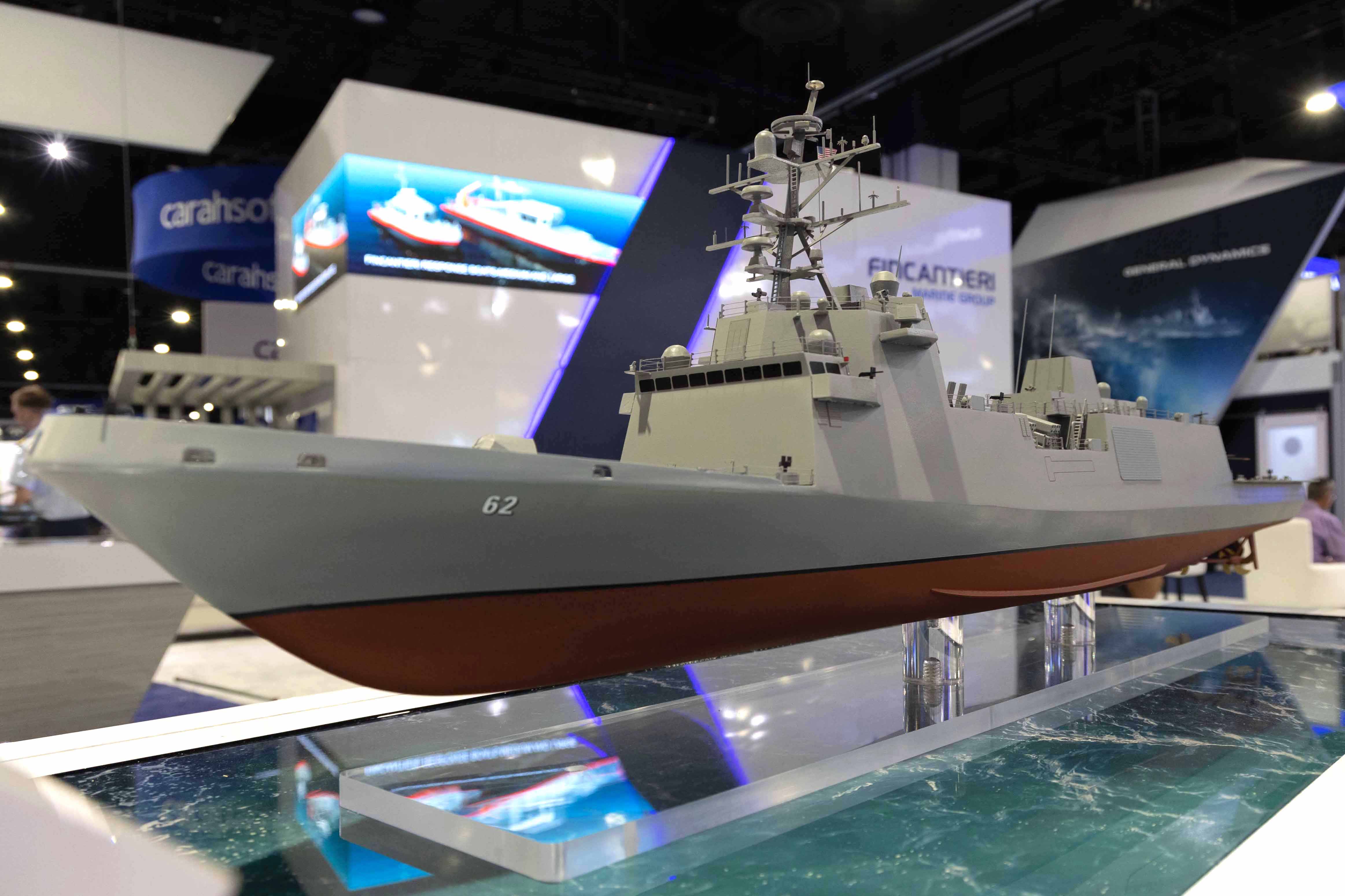
The service is also progressing on the Constellation-class frigate program and in May issued Fincantieri Marinette Marine a $554 million contract modification to start building the second frigate in the class. Fincantieri was also slated to begin fabrication of the first frigate – the future USS Constellation (FFG-62) – by the end of the 2021 calendar year. The Navy’s FY 2022 budget request asked to purchase one frigate.
While Congress has pushed the Navy to buy more large amphibious warships, the Navy’s acting acquisition chief told lawmakers in June that the Pentagon would likely hold off on executing a preliminary agreement to buy four amphibs until it completes a new force structure assessment.
Meanwhile, the Marine Corps remains committed to the need for a Light Amphibious Warship that could shuttle Marines around the Indo-Pacific as they set up expeditionary bases on islands and archipelagos, where they could fire anti-ship missiles. In June, the Navy awarded five companies – Fincantieri, Austal USA, VT Halter Marine, Bollinger and TAI Engineers – “concept design” contracts for LAW, which would come out of the Navy’s shipbuilding budget.
Submarines

The Navy’s submarine acquisition efforts have remained steady, with the first Columbia-class ballistic missile boat under construction and the service continuing to pursue the Virginia-class attack boats.
In the Fiscal Year 2022 budget request, the Navy asked to buy two Virginia-class submarines and lawmakers signaled they want the service to work up to buying three per year.
The service is also in the early research and development phase for SSN(X), the next nuclear attack submarine class that will follow the Virginia-class boats, and asked for nearly $30 million in research and development funding to pursue the new program.
The current head of the undersea warfare division on the chief of naval operations staff (OPNAV N97) recently said the future submarine will focus on blue water operations, unlike its predecessor that was designed for operations closer to shore, and need to be quiet and have more torpedoes.

“We don’t know the specific characteristics that will be in SSNs. But we do believe that the next submarine will have a large horizontal payload capacity. You can read that as it’s going to carry a lot of torpedoes. And we know how to do that. It’ll be fast. And it’ll have acoustic superiority. That’s both sensors to hear the other ships out there as well as stealth – staying quiet,” Rear Adm. Doug Perry said at a conference last month.
“We know how to do all of these things, but we have to integrate them into one platform. Speed and large payload? We did that on Seawolf, and we need to pull that forward to a modular construction submarine.”
On the organizational side, the Navy this year also restructured its program offices for submarines by making the admiral leading the Columbia program the new program executive officer of strategic submarines, or PEO SSBN, which will cover the Ohio-class guided-missile and nuclear ballistic missile submarines. The service also created a program executive officer for attack submarines, or PEO SSN, which will manage the Seawolf class, the Los Angeles class, the Virginia class and the future SSN(X). Part of the restructuring also created a program executive officer for undersea warfare systems to manage undersea weapons and how the Navy’s Project Overmatch initiative – which seeks to create a battle network to connect platforms across domains – will fit into the undersea warfare.
Carrier Aviation

The lead ship in the Navy’s Ford-class aircraft carrier program hit several milestones this year and is scheduled to deploy in 2022 after a series of delays and some reliability issues with key new technologies, including the Advanced Weapons Elevators.
USS Gerald R. Ford (CVN-78) wrapped up its post-delivery test and trials phase in the spring before heading into full-ship shock trials over the summer. Officials described the carrier’s shock trial testing – when the Navy detonates 40,000 pounds of ordnance in the water near the hull to test the ship and its systems – as having no major flooding, injuries, or fires aboard.
The carrier is currently in the midst of a planned incremental availability that will span six months before it begins preparing for the 2022 deployment, which comes four years after the original planned 2018 deployment date.
Despite the carrier’s progress this year, the Navy has still had to take parts from the future USS John F. Kennedy (CVN-79), the second carrier in the class that is currently under construction at Huntington Ingalls Industries’ Newport News Shipbuilding, to ensure Ford is ready to deploy this year, USNI News previously reported. The Navy has said the cannibalization of parts won’t affect Kennedy‘s schedule.
Aircraft
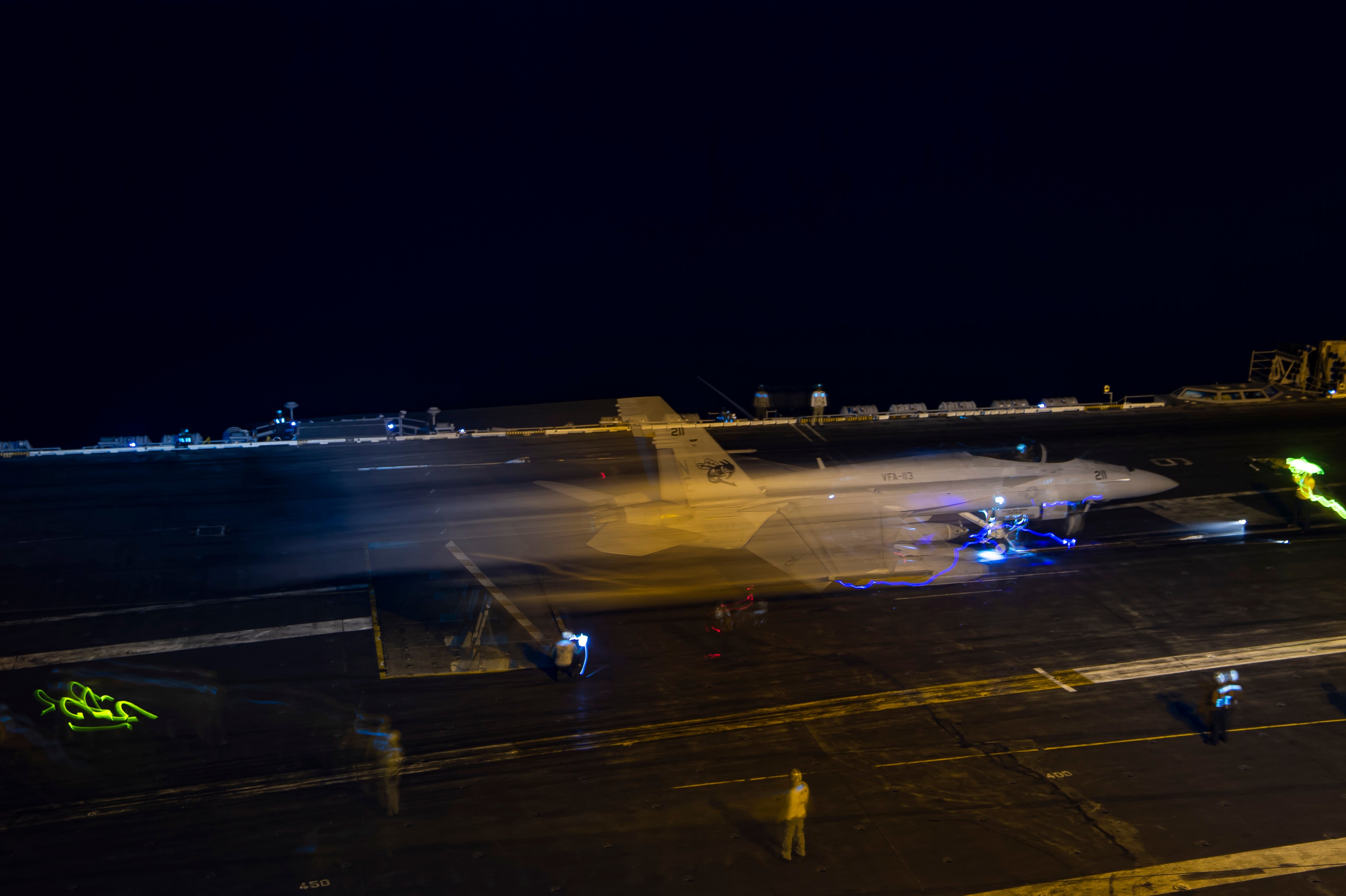
For nearly two years the Navy has argued it must end the F/A-18E/F Super Hornet production line, saying the divestment will allow the service to pursue future technologies and assets like the Next Generation Air Dominance program.
But lawmakers have been skeptical of the Navy’s proposal to end a mature production line and the tension between the service and Congress played out in an open forum over the summer when officials questioned the viability of the Super Hornets against future threats. Chief of Naval Operations Adm. Mike Gilday also criticized defense lobbyists at the time for pushing lawmakers to purchase aircraft the Navy does not want.
“It’s not the 90s anymore. If you go to the tri-service strategy, we really try to punctuate the sense of urgency that we feel everyday against China to move, to move the needle in a bureaucracy that’s really not designed to move very fast,” Gilday said in August. “And so although it’s in industry’s best interest . . . building the ships that you want to build, lagging on repairs to ships and submarines, lobbying Congress to buy aircraft that we don’t need that are excess to need, it’s not helpful. It really isn’t in a budget-constrained environment.”

Despite the service not asking to purchase any Super Hornets in FY 2022, congressional authorizers approved funding for 12 F/A 18 E/F Super Hornets in their final version of the defense policy bill. While the House Appropriations Committee added funding for 12 Super Hornets in its draft of the defense spending bill, it’s unclear where the final appropriations bill will fall on the issue.
Meanwhile, the Navy continues to pursue its Next Generation Air Dominance program, but kept the research and development dollars it asked for in FY 2022 for the program classified. The former air warfare director on the chief of naval operations staff (OPNAV N98) in March said NGAD is expected to be a family of manned and unmanned systems, with a fighter known as F/A-XX functioning as the nucleus. That fighter, the admiral said at the time, is likely to be manned.
The Navy also expects both manned and unmanned platforms to replace its rotary wing fleet. Future Vertical Lift – the term the Navy uses for the platform that will ultimately replace the MH-60R and MH-60S helicopters – is also in the development phase. Requirements include the ability for the platform to operate off the fleet’s frigates and destroyers.
Unmanned Systems
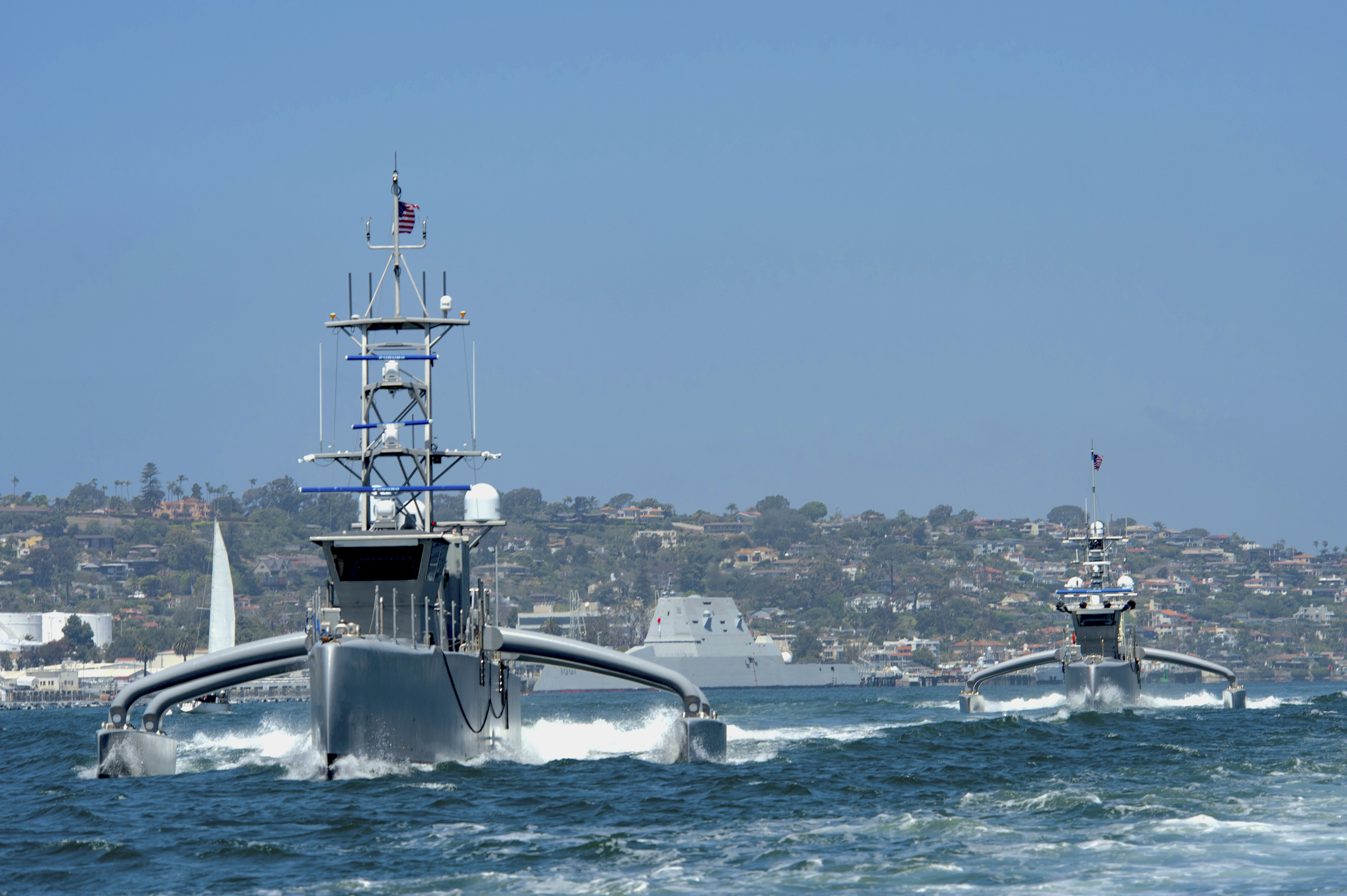
The Navy is continuing its pursuit of unmanned systems across domains, including for surface platforms.
This year the Navy took possession of a second medium unmanned surface vessel prototype, known as Sea Hawk, for experimentation out on the West Coast. Sea Hawk is the sister ship to Sea Hunter, which was developed by the Defense Advanced Research Projects Agency (DARPA).
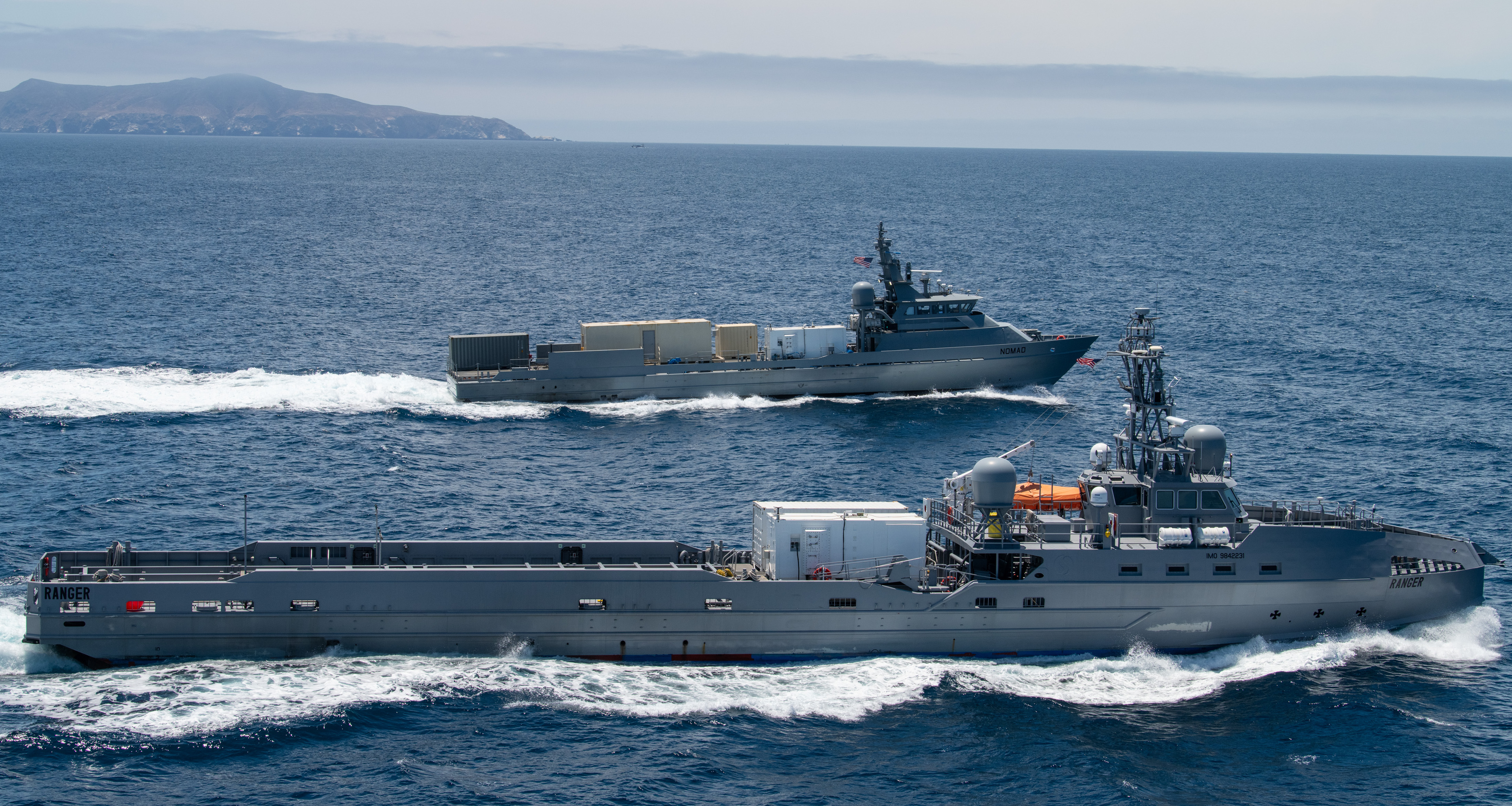
The Navy’s Surface Development Squadron One out in California has been tasked with experimenting with unmanned surface vehicles to get a better understanding of the concept of operations.
While lawmakers have expressed concerns that the Navy is moving out too quickly on untested technologies it does not yet fully understand, the service has signaled its looking for ways to assuage congressional apprehension. For example, Capt. Pete Small, the Navy’s program manager for unmanned maritime systems, earlier this year said the Navy was looking to increase the use of land-based testing of prototypes for unmanned vessels.
Despite the Navy’s push to develop unmanned vessels, the service is still working out how it will man the platforms. Small this year also acknowledged that the Large Unmanned Surface Vehicle (LUSV), for now, would likely need a small crew detachment to perform tasks like refueling.
Shipbuilding Outlook

While the Navy continued to ask for submarines and surface combatants this year, and pursue its research and development efforts for major new programs on the horizon, the service lacks a recent publicly available five-year budget outlook and 30-year shipbuilding plan that could fill in some gaps in naval strategy.
The Biden administration’s FY 2022 budget submission for the Pentagon did not include the typical Future Years Defense Plan that provides a five-year budget outlook. Its shipbuilding plan, provided to Congress in June, only showed FY 2022 construction and potential ranges for programs, unlike the detailed 30-year outlook that typically shows the number and types of ships the Navy projects buying in each year.
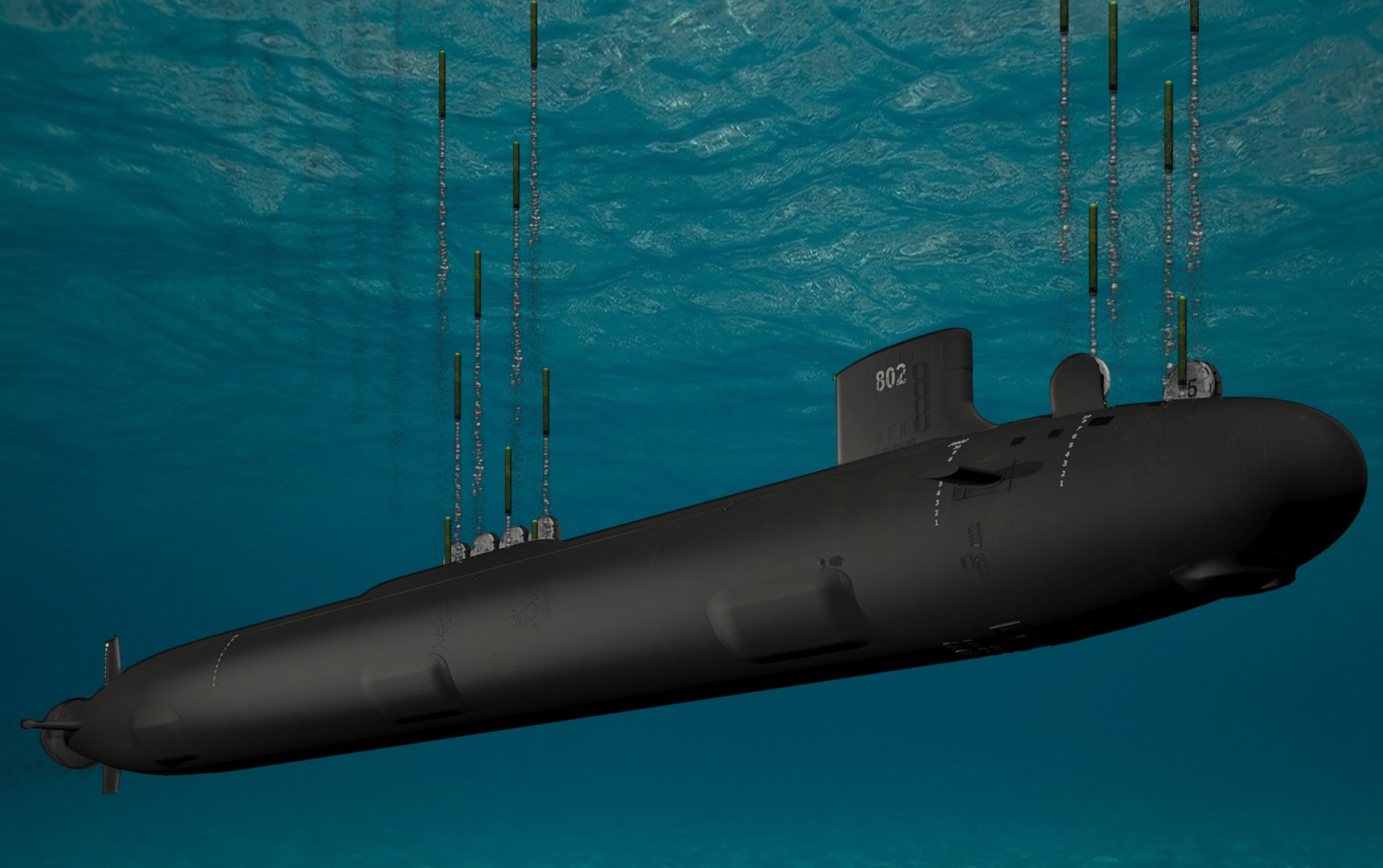
“The Navy, working closely with the OSD Director of Cost Assessment and Program Evaluation (CAPE), continues to develop comparative assessments of naval force structure options consistent with Interim National Security Strategic Guidance and designed to maximize the maritime contribution to the joint force,” the shipbuilding report read.
“The results of these efforts and ongoing experimentation and prototyping will be reflected in the FY2023 shipbuilding plan.”
While some ship acquisition approaches and planned quantities are firm – like that of the Columbia-class ballistic missile submarine program – the future fleet architecture is likely to become clearer after the Navy submits its FY 2023 budget and a long-range shipbuilding blueprint to Congress next year.




